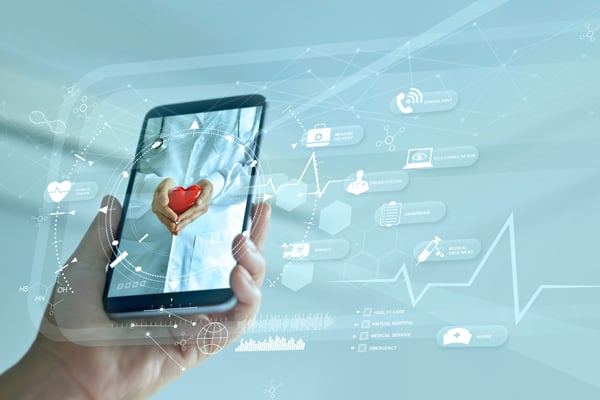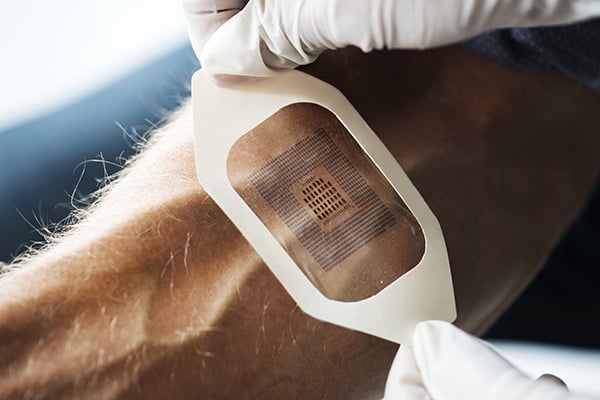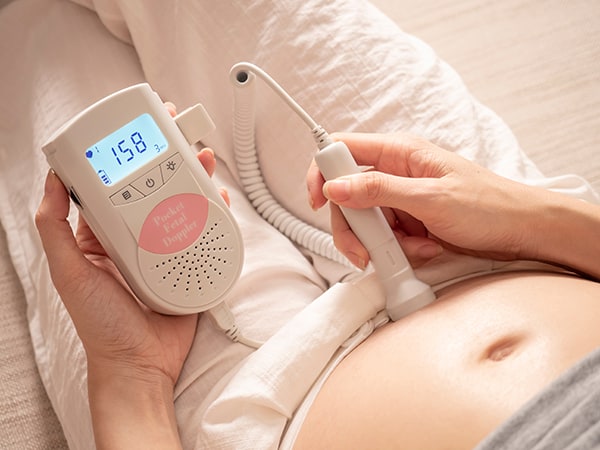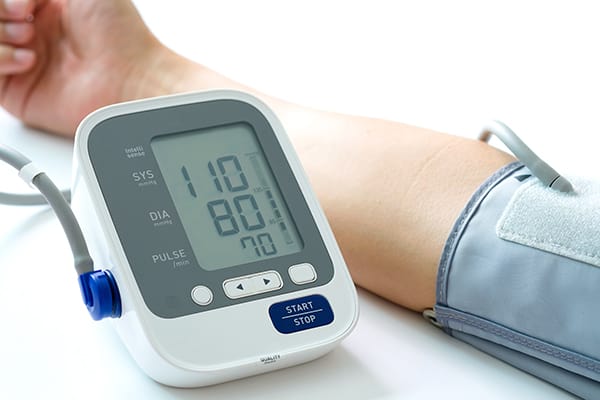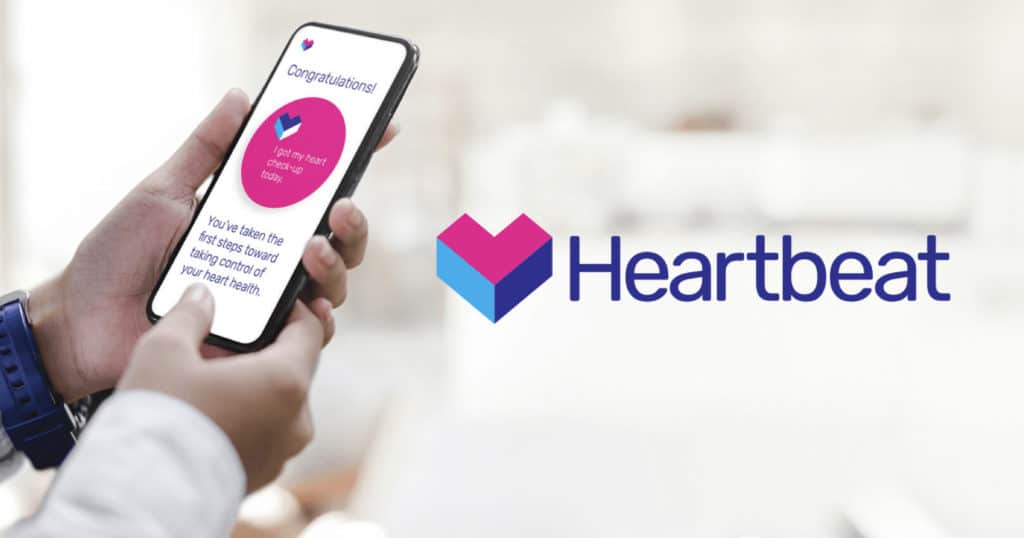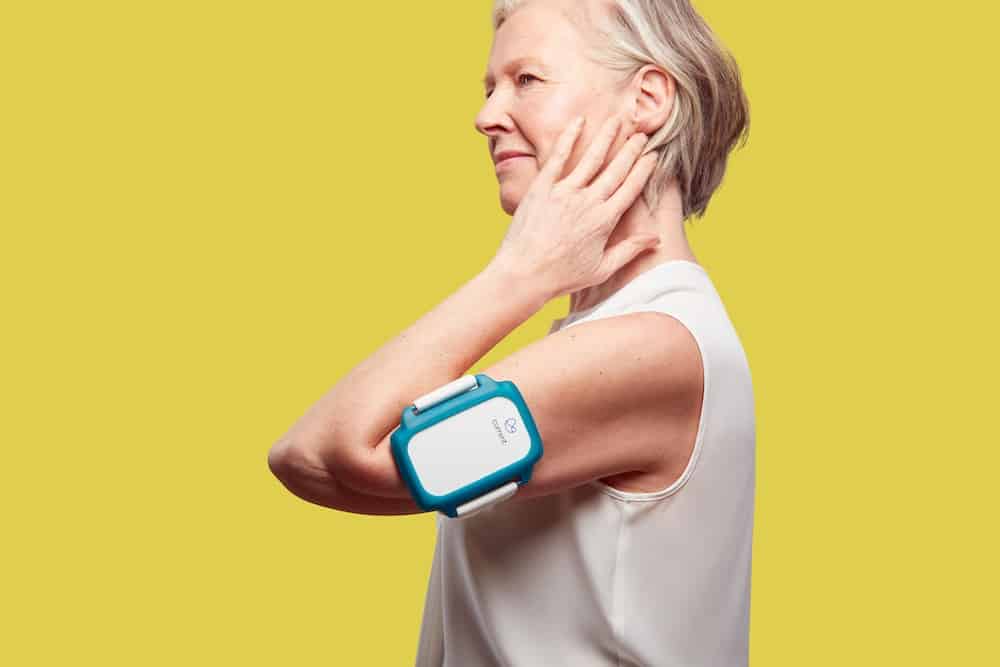EMERGING HEALTHCARE INDUSTRY TRENDS: #3 Expanding the Continuum of Care
Part of our series on healthcare industry trends to watch in 2021, we focus this week’s blog on “Expanding the Continuum of Care.” Technology in the healthcare space is rapidly changing, and as it does, more and more data is delivered to caregivers and patients alike. Because of this, early intervention, at-home diagnostics, and virtual monitoring are within reach for more patients.
What is the expanding continuum of care?
The expanding continuum of care is driven by the use of digital technologies, sensors, and wearables giving care teams a deeper view into patients’ lives pre-op, post-op, and every stage in between. These technologies expand access and visibility for caregivers outside of the clinical environment, and large health entities such as Anthem and Kaiser are partnering with consumer tech companies like Apple and Amazon to make them a reality.
The key drivers of this trend are:
– FDA Digital Center of Excellence launch: This center, will be housed in the Center for Devices and Radiological Health (CDRH), will serve as the federal resource for digital health technologies like wearable and mobile health devices, Software as a Medical Device (SaMD), and technologies used to study medical products.
– Consumerization of healthcare: With the convergence of medicine and technology, healthcare has become an increasingly individualized consumer-driven market, rather than the “accept what you get” model of the past.
– Electronic health record adoption: As electronic health records have become the standard, they are faster and easier for both patients and caregivers to access.
– COVID-19 accelerated adoption: While this trend was already on the slate for the coming years, the COVID-19 health crisis accelerated its growth, creating an excellent incentive for providers and patients to find care solutions outside of hospitals.
Why it matters
As these advances continue to become more widely available and adopted, it will be vital for both providers and patients to ensure that they are harmonized under a single user experience. This will make the patient load less arduous and deliver the correct information to providers to make the most informed care decisions possible.
Opportunity: Improved diagnostics via machine learning
As machine-powered analytics improve, their applications within the healthcare industry will continue to grow. While there may be challenges in adoption (physicians, especially more experienced ones, may not like the idea of being told what to do by a computer), the growing complexity of medicine necessitates outside help to sort through all the data. Machine learning allows caregivers the ability to put data to use, improving patient outcomes and overall efficiency. And adoption isn’t too slow, even with these hurdles — today, 47% of healthcare providers report already using predictive analytics technology to address patient risks and readmissions, among other factors.
New technologies already in the space include analyzing vocal markers, which deduce medical signs from a patient’s voice. Companies like Beyond Verbal, Sonde Health, and Cogito are developing these AI-driven technologies to measure vocal biomarkers that can be inaudible to the human ear but give us valuable clues that can detect psychotic disorders, brain injuries, coronary artery disease, and Parkinson’s. These tools don’t work as a standalone diagnosis but rather offer caregivers another tool in their arsenal for expanding the continuum of care, particularly within the patient’s home.
Offerings like Phillips Cares are helping caregivers prevent readmittance rates by expanding the continuum of care into the home improving patient outcomes. This technology uses predictive analytics to identify when patients may need intervention prior to an emergency. The Philips Cares analytics mesh with Lifeline Auto Alert fall prevention devices to collect and analyze data from multiple sources, to effectively monitor, qualify, and assess patient risk remotely and intervene early to avoid preventable hospitalizations. And these preventions are sizable — Partners Healthcare of Boston projected that technologies like these could prevent 224 hospital admissions annually, totaling $2.2 million in savings.
Opportunity: Increased efficiency as patients do diagnostic work at home
Today, almost anything can be delivered to your doorstep within two days. Consumers are becoming accustomed to on-demand products, and those expectations don’t end with personal tech and toilet paper. At-home diagnostic kits are beginning to become an accepted part of the medical landscape as well, with the global home diagnostics market expected to reach $6.53 billion by 2025. This space is only likely to grow as more companies investigated this rapidly emerging space.
The medical diagnostics market is driving the expansion of the continuum of care moving what were once hospital only tests into the home. Home kits help educate patients and bring them to medical visits better informed and better prepared, potentially decreasing the amount of time it takes to get to a diagnosis. This sort of time reduction is invaluable for a range of severe, time-sensitive medical conditions in which days and even hours saved can improve a prognosis. For example, researchers at Penn State and Houston Methodist have developed a smartphone-based tool that records a patient’s speech and facial movement to identify whether a stroke occurred in less than 4 minutes. And in a less time-sensitive application, John Hopkins has developed an app-based reporting platform that can accurately track and measure Parkinson’s disease patients’ symptoms objectively, in real-time.
And for a sector with a low doctor-to-patient ratio, Heartbeat Health combines wearables, apps, and telehealth appointments with board-certified cardiologist access to ensure patients and physicians can make the best choices for care. AliveCor pairs Bluetooth-connected fingertip sensors with a mobile app to provide FDA-approved, medical-grade EKGs, enabling at-home diagnostics.
Opportunity: Shorter hospital stays with virtual monitoring
As Post-op, virtual monitoring tools improve and become more accessible for both providers and patients; they offer both groups increased postoperative intervention options to prevent complications and hospital readmittance. They are keeping costs down for patients and providers, moving patients out of hospitals and back home quickly while still providing ongoing care.
Combined with telehealth consultations, these virtual tools can help get patients home and healing, rather than in hospitals. For example, UCLA’s pre-programmed mobile devices, blood pressure monitors, and pulse oximeters allow health teams to keep up with vital information. Philadelphia-based Jefferson Health is also partnering with MegesHealth to pilot the iPostOp platform, monitoring patients via a smartphone app.
Devices like Current Health combine wearables with vital sign monitoring to assist in 24/7 symptom check-ins and education. And in the post-cancer care space, researchers at McMaster University have developed a hand-held dongle to attach to smartphones that will measure biomarkers for prostate cancer like diabetic blood testing. In both of these examples, this monitoring is more convenient and cost-effective than in-person care options.
Let THRIVE Help You Keep a Pulse on the latest Healthcare Industry Trends
Keep an eye on this series each week as we explore upcoming trends in the healthcare industry, and if you haven’t already, check out the previous articles in this series.
As healthcare shifts in response to improving technologies and current events, keep your business on top of the trends. Contact THRIVE to see how our insight and consultation can help your company respond to changes within the industry.
RELATED POSTS
If you missed any of the previous posts in this blog series on the future trajectory of healthcare, you can find them here:
Week 1: The Shifting Point of Care
Week 2: The Hyper Personalization of Care
Week 4: Patient Empowerment
Week 5: Physician Empowerment
Week 6: Orchestrating Operating Room Efficiency
Week 7: Human-centered Healthcare Design
Week 8: Improving Medical Device UX Design
Week 9: Improving Contextual Design & Cognitive Empathy
Week 10: Enhanced Data Visualization Tools
Week 11: The Increasing Prevalence of Robot-Assisted Surgery
Week 12: Behavioral Design for Medical
Week 13: Humanized Patient-Provider Interactions
People Also Ask These Questions About The Continuum Of Healthcare
Q: What is the continuum of care, and why is it important?
- A: The continuum of care refers to a comprehensive system of health services spanning all levels and intensities of care. It is essential because it ensures patients receive coordinated and seamless care throughout various stages of life and across different health services, minimizing gaps in care and improving overall health outcomes. This model is particularly beneficial for individuals with chronic conditions, as it facilitates smooth transitions between types of care as patient needs change over time.
Q: How does the continuum of care model benefit patients with chronic diseases?
- A: Patients with chronic diseases benefit from the continuum of care model by providing a coordinated approach to managing their health through different stages and types of care. This ensures proper transitions to the right level of care as their condition changes, such as moving from acute care to rehabilitation or from hospital care to home-based services. This integrated approach improves chronic condition management, cuts hospital readmissions, and enhances patient quality of life.
Q: Are preventive services covered under the continuum of care model?
- A: Yes, preventive services are integral to the continuum of care model. These services are designed to prevent illnesses or detect them early when they are easier to treat. Under healthcare plans that follow this model, preventive services such as screenings, immunizations, and wellness visits are typically covered without additional costs to members. This approach helps maintain individuals’ overall health and reduces long-term healthcare costs by avoiding developing more severe conditions.
Q: How do I find out if my doctor is part of my health plan’s network?
- A: To determine if your doctor participates in your health plan’s network, you can call your doctor’s office directly and inquire about their network affiliations. Alternatively, most health plans offer an online provider directory on their website where you can search for your doctor by name or specialty to see if they are listed. Ensuring your doctor is in-network is crucial for managing out-of-pocket costs and receiving the full benefits of your healthcare plan.
